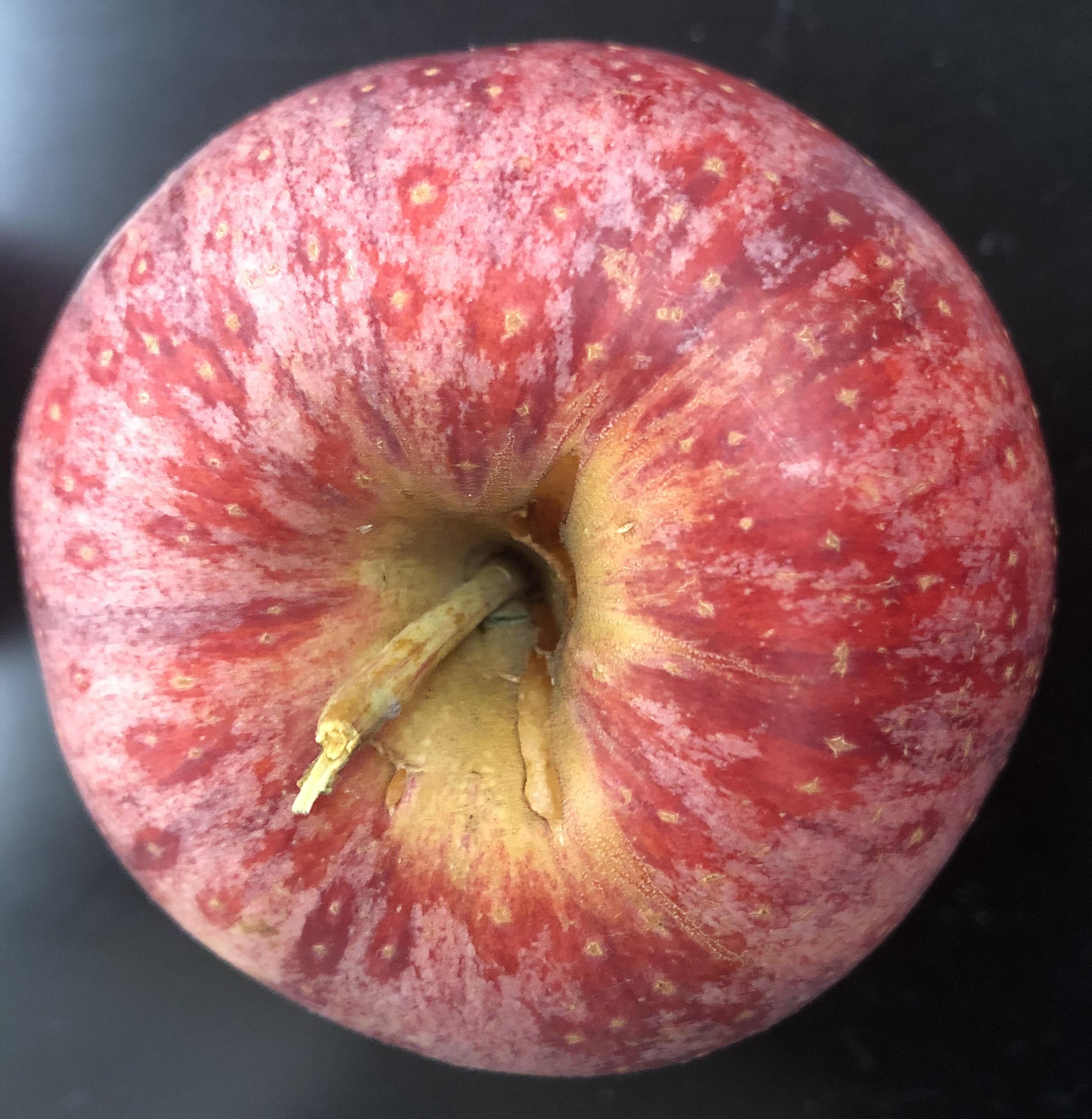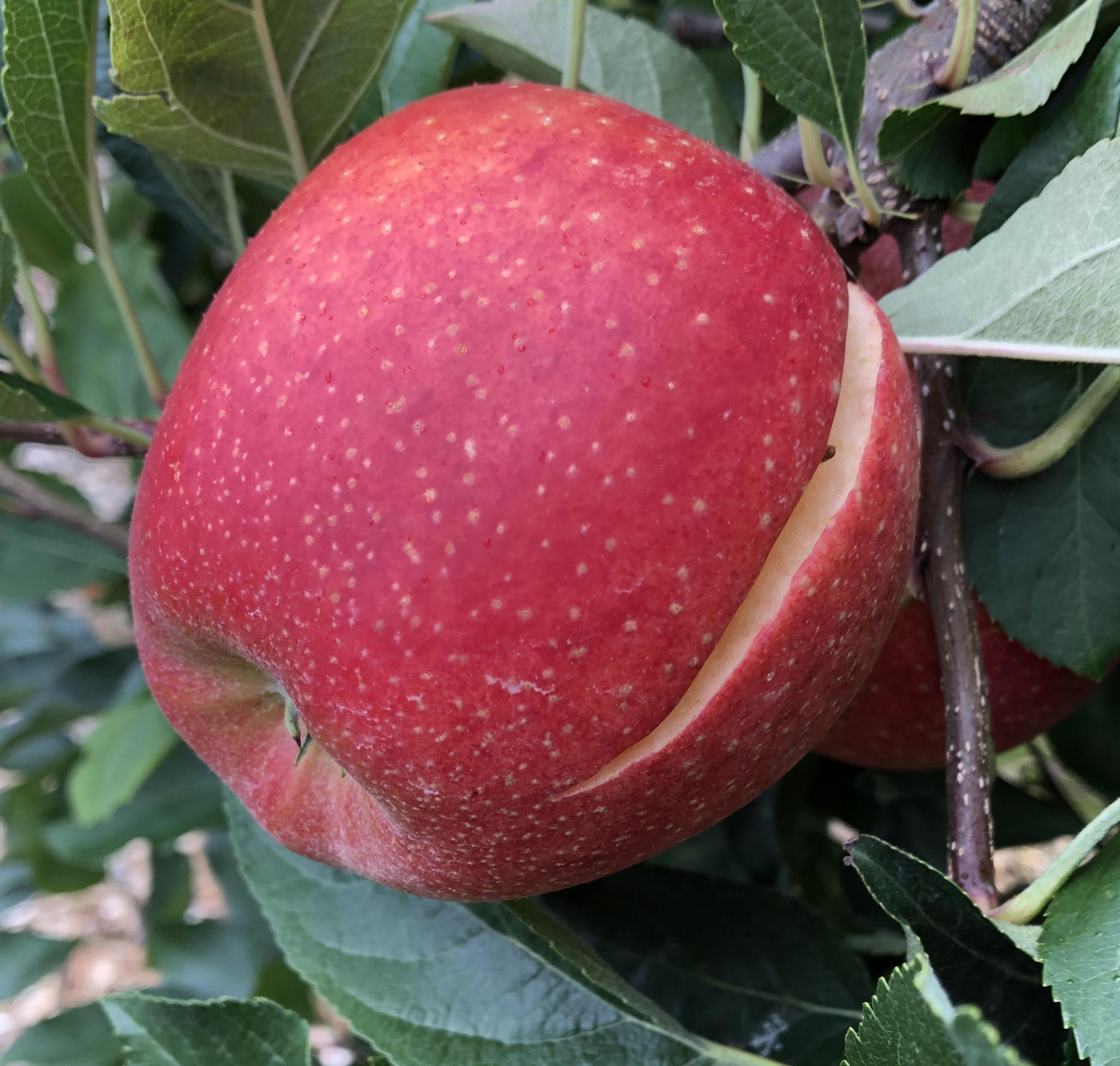Rain Cracking in Gala Apples


Hurricane Debby broke the summer drought, bringing much needed rainfall. While this welcome rain relieved heat and drought stress, it also caused rain cracking of some ripening peaches and apples.
Gala apples are particularly prone to cracking. That cracking begins in the stem-end basin as small cuts (Figure 1). These small cuts are potential entry points for plant pathogens which can damage stored fruit and undesirable in graded fruit. They also pose a food safety risk when apples are floated in a dump tank or in sorting and packing.
These initial cuts become the starting point for large splits in tree-ripe Gala apples (Figure 2). As fruit starch is converted to sugar during tree-ripening, the osmotic potential of the fruit increases. That pulls water into the apple more rapidly. That increased level of sugar, coupled with a heavy rain during tree-ripening causes Gala fruit to split and become unsaleable.
In past years we saw less cracking in AVG (ReTainTM) treated Gala apples.This treatment delays ethylene production by the fruit, which delays tree-ripening and the conversion of starch into sugar. Hopefully, growers who used ReTain to delay harvest and improve size and color will see a similar benefit this year.
This article is featured in the September 2024, Volume 15, Issue 8 of the Vegetable and Fruit News.